
On April 24th Katie Mackay, partnered with Arthur Jones, completed the Lake District Classic Rock Challenge. In doing so she became the first woman to finish in under 24 hours. Katie led every pitch, and the pair came in at a total time of 23:28:46. The challenge combines 34 miles of running between 15 multipitch Classic Rock routes, involving 70 pitches of climbing from VDiff to VS, and 4300m of ascent. In short: it's really, really tough. But just how tough? We found out...
Could you tell us a bit about your background, in terms of your climbing, running and also your professional life as a mountaineering instructor?
I grew up on the Isle of Bute which was amazing, but there is no climbing. I rode horses growing up and spent most of my time outside. I got introduced to climbing on a university trip and I'd never done anything like it before. I did my first ever multi-pitches at Shepherds Crag and Al Halewood guided me up Little Chamonix (VD) at the end of the day - I was hooked! We walked back down talking about climbing as a job and how I could do my SPA and become an instructor. I was totally psyched from that trip but when I went home I didn't know anyone else that climbed and didn't really know how to continue with it. When I was 22 I moved to the Lakes and that's really when my climbing career started. I spent most days climbing after work or exploring the fells and it hasn't really changed much since. I'm now a Mountaineering and Climbing Instructor and I love my job. I get to take people to some really cool places and teach them to climb. What's not to love?!
I have a bit of a love hate relationship with running and I wouldn't have really called myself a runner before doing the challenge. I'm a bit slow and shuffly, but I can keep going all day. I ran a bit when I was younger but only really 5km at a time. Through lockdown I upped this a lot and ended up very injured with knee and hip issues putting a halt to running again. I had to start from the beginning with training for the challenge but I have started to really enjoy running in the mountains. There is something very special about being able to travel light and fast through these amazing places.
It's one thing being aware of the Classic Rock Challenge, but it's quite another thing doing it. When did the thought (and possibility) of doing it cross your mind?
I had been aware of the Lake District Classic Rock Challenge for years but hadn't really looked at it as I just thought it was way beyond me. I watched in awe as Will Birkett and Tom Randall battled it out for the fastest times wishing I could do something like that, but once again not really looking into it as a possibility. When the ladies from the Pinnacle Club did it over three days last year I had this sudden realization that I could do that and that it didn't need to be done in under 24 hours. This didn't last long as after a training run with my friend Tess from Langdale to Borrowdale last summer I realised that I actually might be able to pull it off in 24 hours, but I would need to speed up my running.
How many of the routes had you done before, and how much of the terrain in between them was already familiar?
When I first decided it could go in 24 hours I had done seven of the 15 routes. I was fairly comfortable with the main running route I was planning to take, but the intricate shortcuts and ways to get to the bottom of crags needed more attention. I set about doing the rest over autumn, winter and spring. It was really fun going out over winter to reccy running sections and get a route or two in along the way. I was quite obsessive over the running routes as I knew this would be my main challenge and where I needed to be able to improve my time, as the climbing is fairly straightforward. I had a map with different highlighted routes and scribbled post it notes all over it from reccys and plans changing. I had my running route pretty set by the time the actual day came round, although it did change slightly on the day.
From that point on, how did you go about preparing, both for the running and the routes?
My main focus was on my running fitness and fuelling myself. I wasn't very good at eating while running and the distance took a long time to build up. Whenever I did any routes I would keep a note of what gear would work best so I didn't need to carry anything extra.
How early did you opt to start on the big day itself, and how long did you anticipate it taking?
We started around 10:20pm on the 23rd of April, which meant that the first five routes would be in the dark. These were are all very steady and the whilst it did have the biggest run between them, it was the most straightforward section, so could be done without light. I had the timings set for doing it just under 24 hours. We lost time on some sections but thankfully managed to make it up over the last running section from Seathwaite and the last two routes were done very fast.
You climbed as a roped pair, as opposed to solo. Could you tell us a bit about the pros and cons of each and why you chose as you did?
We opted to climb as a pair, as I was worried about climbing tired. There were a few routes that I was tempted to solo, but we stuck it out with the rope, which I think was the right decision as my brain was very tired - especially on the second half of the run. Soloing would make it quicker, but is slightly less safe. We opted for moving together rather than pitching as it's faster, but is slightly safer than soloing (although you definitely still don't want to fall off as you would go a long way and pull the other person with you). Arthur would belay me until we got to the end of the rope and then he would set off climbing until we were both on top. Down climbing was the same but we both had to be a bit more careful as if Arthur moved faster than me I'd have rope pooled round my feet (and if I moved faster than him the rope would pull him). We were about 15m apart at all times so we could talk to each other as we went.
Obviously finding a partner for a challenge such as this can be quite complex. How did that come about?
I had a couple of people that I had asked who were super keen, but its quite an effort to train and get prepared for something like this, and finding someone who had the time and availability wasn't easy. It also requires a lot of trust in someone's ability, and also that they will tell you if something isn't right, so you're not putting each other in danger. It was tricky to find someone that ticked all the boxes. Arthur wasn't actually keen on the challenge at first, but he knew he could run the distance and climb the grade fairly easily, so I managed to persuade him he should do it with me.
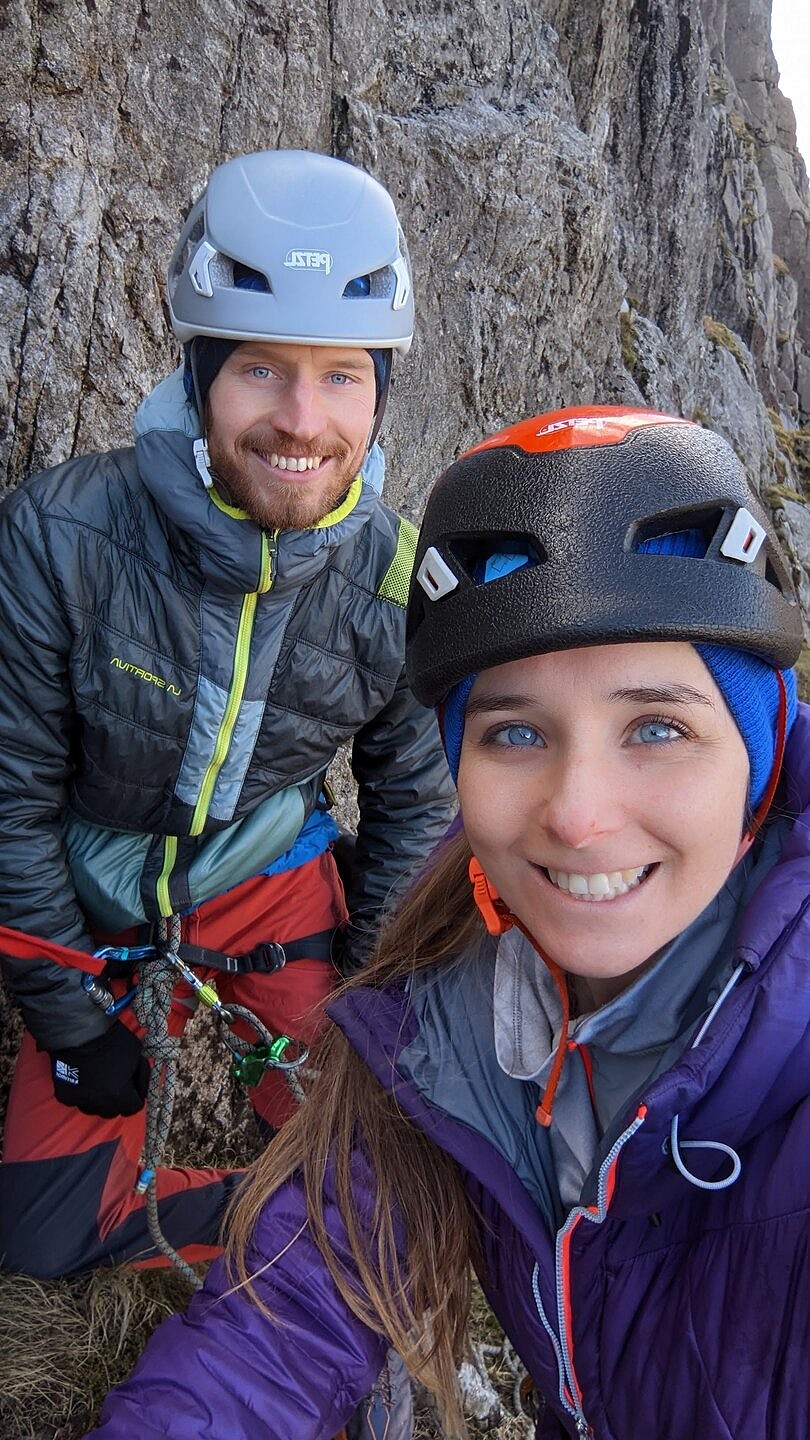
What climbing equipment did you take?
We split the kit between us and took:
- 20m Beal Opera Rope
- Scarpa Maestra climbing shoes for me
- La Sportiva Mythos climbing shoes for Arthur
- SALEWA Ortles Harness for me
- Arcteryx Harness for Arthur
- DMM Dragon Cams size 00,0,1,2
- DMM wallnut size 1-6
- DMM half nuts size 1-7
- 6x 60cm slings with 2x DMM phantom snapgates on each
- 2x DMM Screwgates
- 1 x Belay Plate
- 1 x Nut key
What other kit did you take with you, aside from climbing equipment (subtext: tell us about the snacks)?
I had such a hard time keeping down food when I was training and knew it would be an issue to get fuel in for the round. I tried some tailwind sachets the week before and they were amazing so I could fuel myself even when I couldn't eat. I ended up taking:
- 6x tailwind saches
- 8x Gu and High5 Gels
- 2x cheese on a brioche bun
- 1x bag of haribo tangfastics
I had a SALEWA Apex Climb 18L rucksack for my kit and a 500ml water bottle which was filled at various points en route. I wore some Dynafit trail shoes and had my comfortable climbing shoes in my bag that I could throw on over my socks.
I had some Salewa leggings and a small packable down jacket which I ran in most of the time as well and some lightweight gloves.
Having warm light kit made all the difference as it was April and still quite chilly, the wind was also very strong over the night and into the morning so having the extra layer was essential.
Time is obviously all important on a challenge such as this. How did you streamline your operations throughout the day?
Getting ready to climb can be faffy, so we had to come up with a system for getting ready and leaving the floor as fast as possible and packing up at the top quickly. We single coiled the rope and made sure we had exactly the amount we needed and no more. We kept to one piece of gear between us most of the time and Arthur would shout up if he was taking it out so I knew to put something in if I hadn't. This saved time placing gear and we were both happy enough on the routes that we were comfortable with this. I led every route, as I knew them all, which saved us time on route finding. My favourite streamlining moment was on Pillar, as we hadn't practised it together, but the plan was when I got to the top to sling a rock and head straight back down New West Climb (VD) while Arthur was still going up Rib and Slab Climb (HS 4b), we then met at the crossover of the two routes to exchange gear so I had enough for us still to have a piece between us at all times and kept heading in our directions, it felt very efficient on the day.
What were the routes you most looked forward to?
I was really looking forward to Little Chamonix (VD) for the obvious reason that it's the last one but also because it's such a fun route and also means a lot to me as it's really where I realized how much I loved climbing. I was also looking forward to the routes at the Napes because I love being there. They ended up being my worst climbs on the day because of the wind being so bad and starting to get tired, but I was glad that happened there as it would have been tougher somewhere else.
What were the routes you least looked forward to?
I was nervous about Moss Ghyll Grooves (VS 4c) as it shut down an earlier attempt by being dripping wet. It was bone dry though and the moves were all lovely and the rock felt sticky underfoot. I was also a bit stressed about Pillar as two weeks before there was still snow in the gully descent and on the route, we'd been up there and the routes were still icy and not in great condition to be moving together on. It was totally fine when we got there though and it all went super smoothly.
When did darkness hit and how did that affect things?
I set off into the dark, which was planned, as the longest running sections are at the start and the first five routes are all really steady in the dark. The navigation was fairly easy even at night, apart from a boggy section where it's nice to be able to pick the dry path round when you can see it. Climbing most of the routes by headtorch didn't feel much different as they are all very steady, with quite obvious route finding. Down climbing Bracket and Slab Climb (VS 4b) in the dark was exiting though as we had only climbed up it before; in descent I had to crawl onto the bracket and just dangle off it from my hands while I shone the torch about looking for the foothold. Easy big holds to dangle from but being 5foot2 and needing the extra foothold to reach anything did make it rather exiting in descent. It's also not really very protectable for that move in descent for Arthur so we had to make sure he was really careful on it.
It was also dark for Little Chamonix (VD) at the end but this route is very obvious to follow, and it was planned that it would also be OK by torchlight.
Obviously you were close to 24hrs - was there any moment you thought you weren't going to make it (and were you bothered)?
I was constantly checking the time to see if we were on schedule or not, and it was a rollercoaster of on time and behind time the entire way. I messed a few bits up along the way which wasted time so I would have been really annoyed if we hadn't made the time back. I would have definitely tried again if it hadn't gone. It was always going to be quite close and I was never 100% sure I could definitely run fast enough for such a long time, but I was very happy when it went.
What were your immediate feelings on topping out of the last route of the Challenge, Little Chamonix?
I actually started to get a bit of a lump in my throat as I was moving off the boulder onto the slab towards the final pitch. Topping out I felt ecstatic, then the realisation that we had done it came over and I was honestly a bit sad as well. It was amazing and I was so psyched but also I'd had so much fun preparing, training and planning, it was strange that it was done. We sat at the top looking out at Derwent Water for a while and our friend Sam joined us as he'd come to cheer us on at the end and pick us up.

What advice would you give to anyone wishing to embark upon the Classic Rock Challenge?
Try it. It doesn't need to be done in a day or be the fastest time, but don't write it off completely like I did before, because you never know if you don't start trying. Also, do it your way and how you feel safe and comfortable, don't feel pressure to move together or solo; if you're more comfortable pitching, then do that.
Now that you've done it, the inevitable (and unimaginative) question is, what next?
I've really enjoyed the process for this challenge so I would love to do some similar things. Moving fast and light in the mountains is just so enjoyable and I'm super psyched to do some more.
What other challenges inspire you?
This isn't on the cards but I'm super psyched by Will Birkett's recent Wales Classic Rock Round. It makes me want to look at what other things I could link up for a mega fun day out.
And following on from the above, was there anyone in particular that inspired you to give this a go?
The ladies from the Pinnacle Club doing the round over three days was definitely the first thing that made me realize it could be something I could do but I think mostly it was my friend Jill asking if we could try it over a couple of days that made me get the map out and really look at it and realize how possible it was.
If you enjoyed this article and want to know more about what the Lakes Classic Rock Challenge entails, check out the following film of Mhairi Helme and Jasmin Paris making an attempt, and the UKC Ticklist below:
Login as Existing User to subscribe, which will show the climbs you've already ticked.
| Add | Climb name | Grade | Height | Crag name | |
|---|---|---|---|---|---|
| Murray's Route | S 4a *** | ? | Dow Crag | ||
| Ash Tree Slabs | VD *** | ? | Gimmer Crag | ||
| 'C' Route | S 4b *** | ? | Gimmer Crag | ||
| Bracket and Slab Climb | VS 4b *** | 97m | • 5 | Gimmer Crag | |
| Bowfell Buttress | HS 4b *** | 110m | • 4 | Bowfell | |
| Jone's Route Direct from Lord's Rake | HS 4b *** | ? | Scafell Crag | ||
| Moss Ghyll Grooves | VS 4c *** | 79m | • 4 | Scafell Crag | |
| Tophet Wall | HS 4b *** | 75m | • 4 | The Napes | |
| Needle Ridge | VD *** | 114m | • 5 | The Napes | |
| The Wasdale Crack | HS 4c *** | 17m | • 2 | The Napes | |
| Rib and Slab Climb | HS 4b *** | ? | Pillar | ||
| New West Climb | VD *** | ? | Pillar | ||
| Gillercombe Buttress | S 4a *** | ? | Gillercombe | ||
| Troutdale Pinnacle | S *** | 105m | • 6 | Black Crag... | |
| Little Chamonix | VD *** | 70m | • 4 | Shepherd’s Crag | |
45 stars |
667m, 41 pitches | ||||
Ewan, Hidden, Hidden, Hidden, Nigel Bond, Hidden, Katie-mo, Hidden, James W, Hidden, Stone Idle, Joshcastril
- DESTINATION GUIDE: Bridging Two Worlds: The Unlikely Connection Between Horses and Climbing 1 Apr
- PHOTOGRAPHY: UKC/UKH Photography Awards 2023 - Winners 15 Mar
- PHOTOGRAPHY: The North Face & Ellis Brigham Photography Awards 2023 - Category Finalists 16 Feb
- GROUP TEST: Performance Headtorches - Petzl Nao RL, Silva FREE and Black Diamond Distance 1500 2 Feb
- REVIEW: The North Face FUTUREFLEECE Hooded Jacket 24 Jan
- ARTICLE: The Role (and Reprisal) of the New Routes Book 19 Dec, 2023
- REVIEW: Montane Phase Nano - The Ultimate Running Shell? 17 Nov, 2023
- REVIEW: Patagonia Triolet Jacket - PFC-Free, and Built to Take Abuse 3 Nov, 2023
- Sustainable Gear: The Evolution of Gore Tex - ePTFE, ePE and PFC-free DWR Treatments 1 Nov, 2023
- REVIEW: Scarpa Generator and Generator Mid - The Ultimate Trad Shoe? 5 Sep, 2023

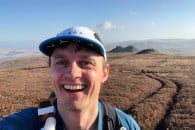

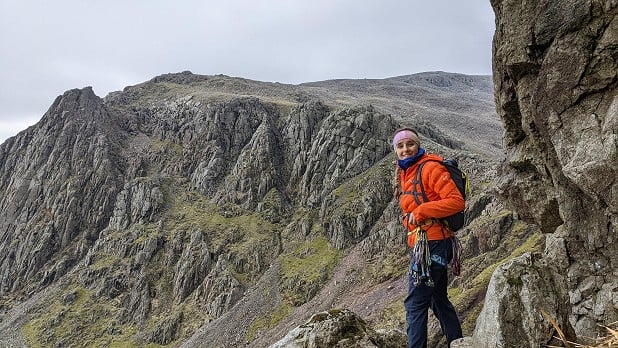
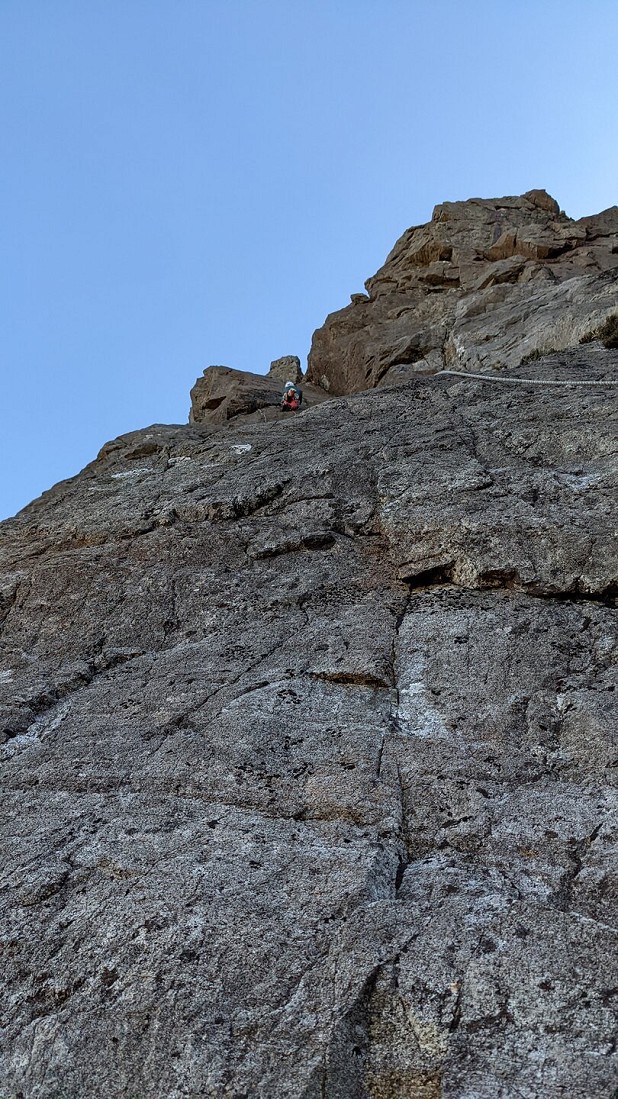
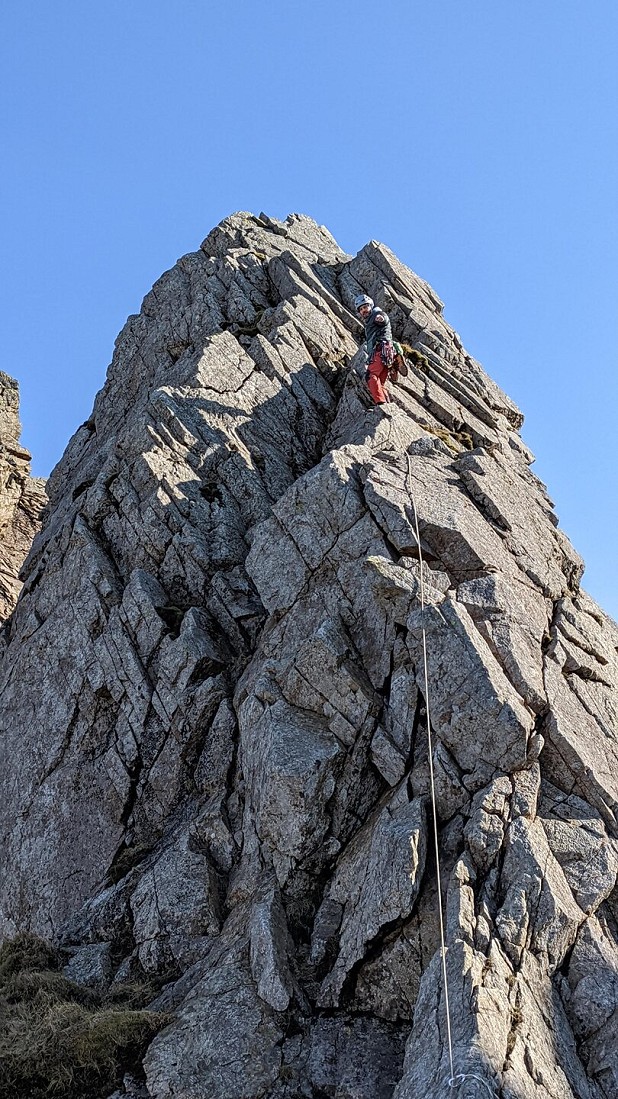
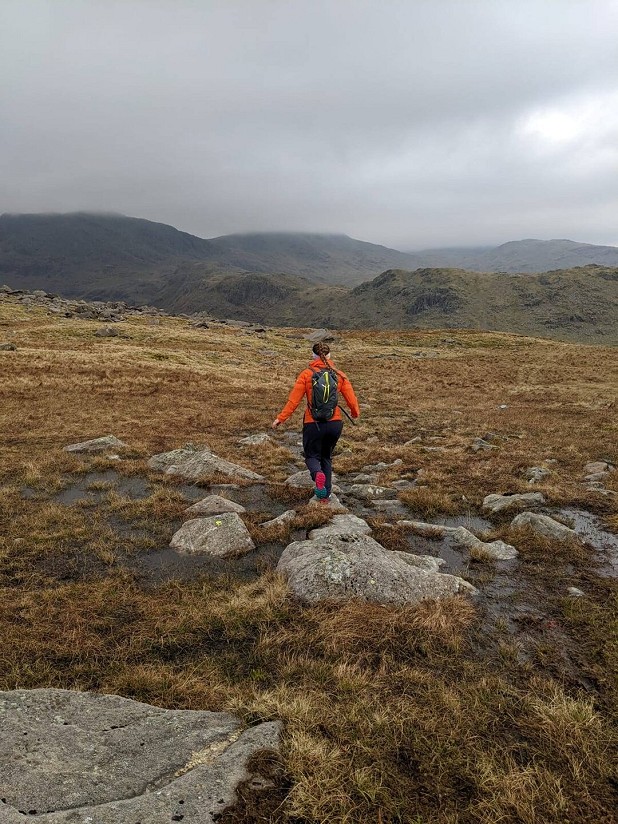
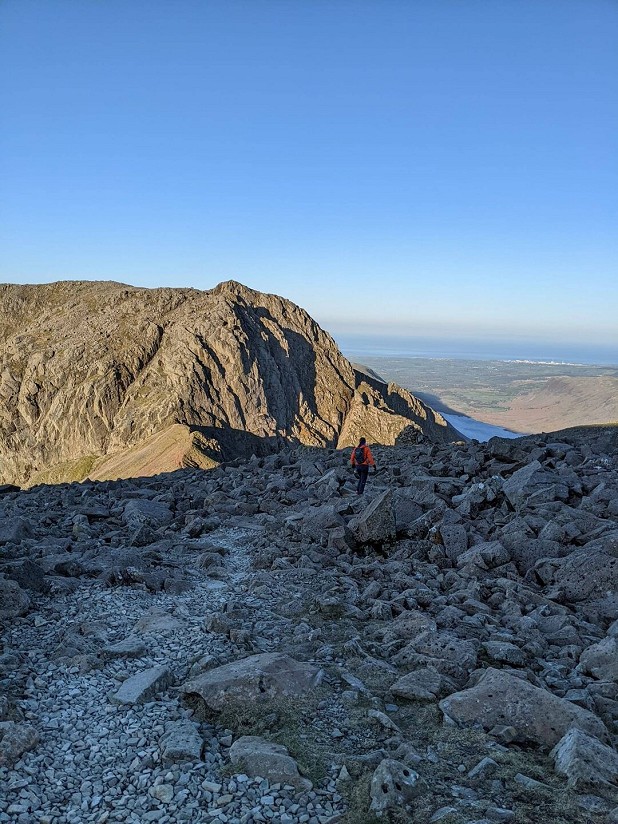
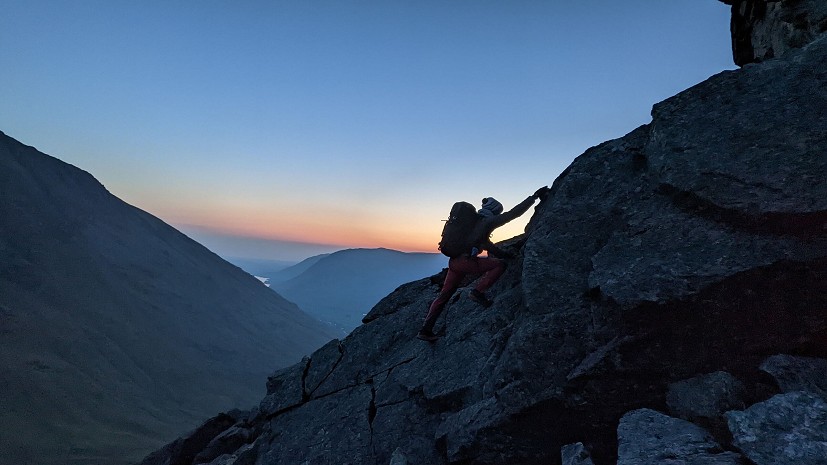
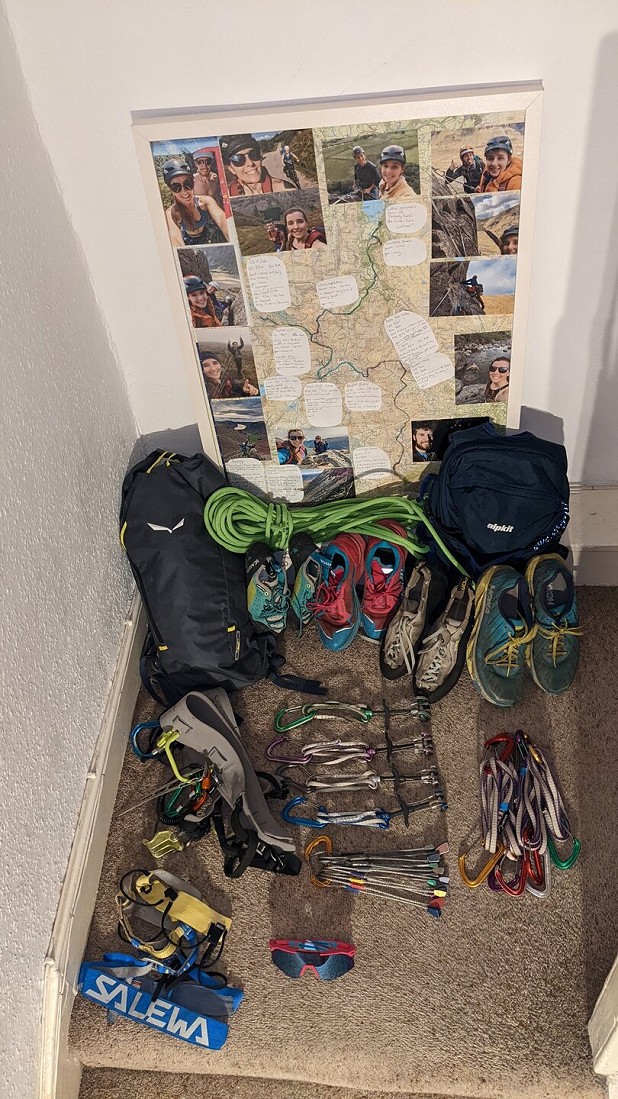

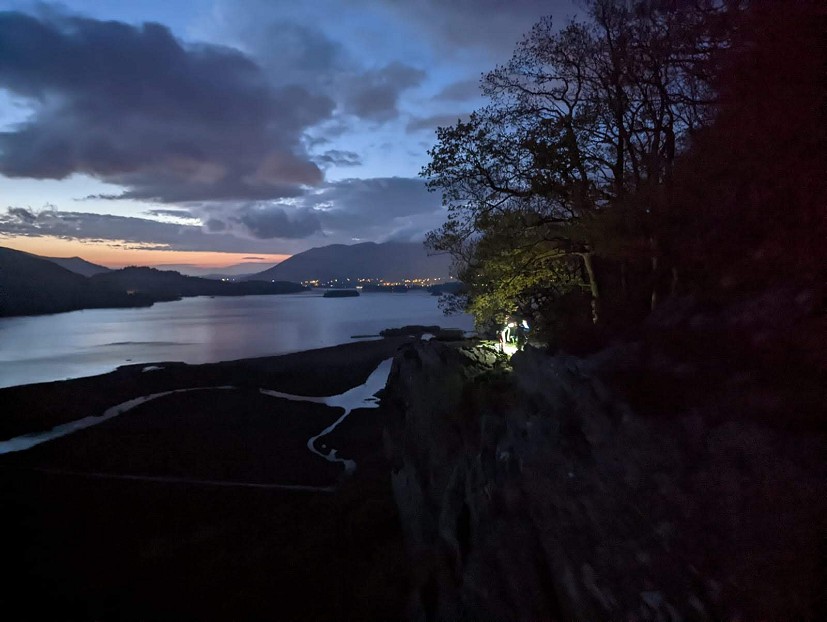
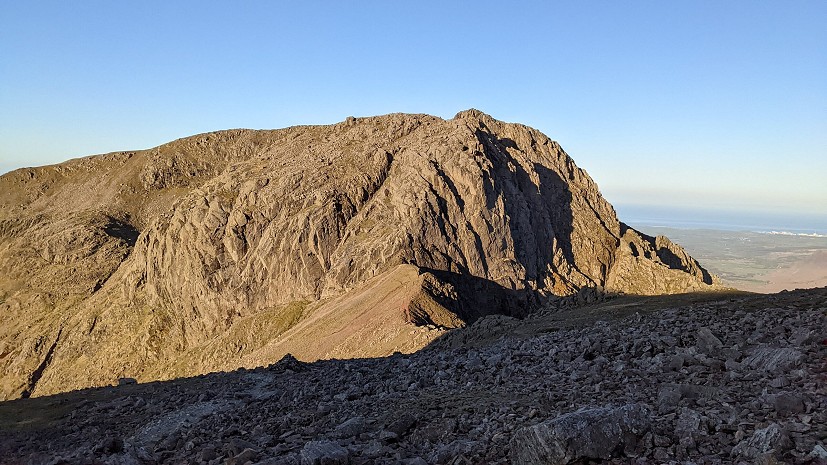





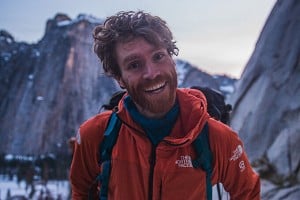

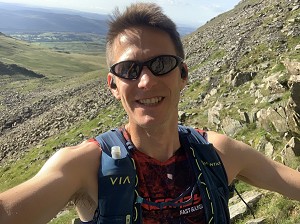
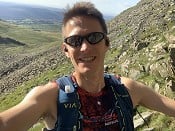
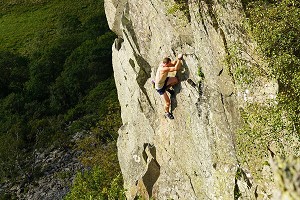
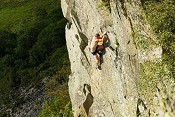

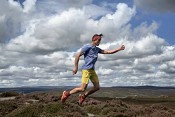
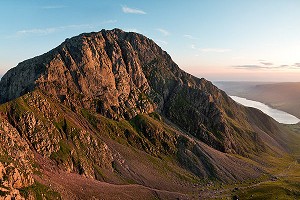
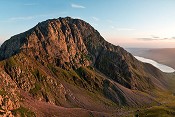
Comments
Great stuff!
Nice one!
That's insane. I couldnt survive a day sitting watching telly on that amount of food. Doing that much exercise on that little is mind blowing.
Awesome effort.
Inspiring stuff; she comes over as such an Everywoman, although clearly she isn’t. And what a great picture of Scafell.
jcm